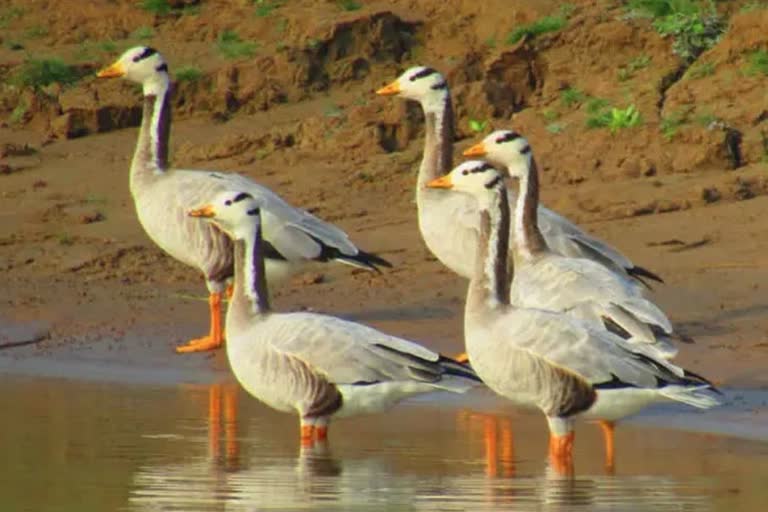Ranchi :Forest officer Ajinkya Bankar is convinced that an awareness campaign is the way forward in the conservation of birds for which he has identified nearly 150 avian species in the last two years in Jharkhand's Jamtara district, around 210 km from here.
Besides identifying as many as 146 species of birds in the district, Bankar, the Divisional Forest Officer (DFO) of Jamtara, has also compiled the names of these species, several of which are rare, in Santhali and Hindi so that common people can identify them easily and make efforts for conservation. He has also taken the initiative for growing trees that attract birds.
Though Jharkhand is considered to be a safe abode for birds due to its widespread greenery, the feathered creatures often fall prey to poachers. "I found bird poaching to be a cause of concern in the area. Even school children are killing them as they are unaware of their importance to the environment and society. So I decided to launch an awareness campaign," Bankar told PTI.
In the survey spanning two years, as many as 146 species, including 40 types of vulnerable migratory birds, were identified. Many threatened species such as Common Pochard, Indian River Tern, Woolly-Necked Stork, Black-Headed Ibis, and Alexandrine Parakeet were found during the exercise, the officer said. "Since local people are not familiar with the English names of birds, we decided to compile it in the local Santhali language and Hindi," he said.
Bankar has earned appreciation for his initiatives with the Indian Bird Conservation Network (IBCN) praising his efforts. He further said that in a bid to spread awareness, around 40 people have been trained in bird conservation. "Their responsibility is to create awareness about bird conservation among people. Now, we are getting good results as villagers are now helping in bird protection and rescue," he said.
Emphasis was also given in the last two years to the planting of bird-oriented tree species, he said. "We focused more on growing peepal, banyan, and sycamore trees in the district to improve the habitat for birds as they contribute largely in strengthening the health of the environment," Bankar said.
IBCN's Jharkhand coordinator Satya Prakash said, "I appreciate the officer's initiative. But, if we want proper conservation for birds, we need such initiatives across the state. Besides, the forest department should also ensure proper monitoring of birds."
Prakash, who is also the state coordinator of the Asian Waterbird Census (AWC), initiated a bird headcount in a limited number of water bodies in 2008. Since 2016, he has been carrying out the bird census in 25 major water bodies of the state. "If we analyse the data of the five years since 2016, we find the total bird headcount hovers between 65,000 and 75,000 across 25 water bodies. The number of migratory birds remained between 20,000 and 30,000 in these water bodies," he said.
A large number of birds from the Himalayan region and central Asia migrate to Jharkhand, including Jamtara, during winter. But, many of them fall victim to poaching by the locals. Prakash said a decreasing trend in bird population was observed in the water bodies where tourism, boating, fishing, and other activities have increased of late. "Birds do not like disturbance. So, they migrate to safe and peaceful places," he said. (PTI)
